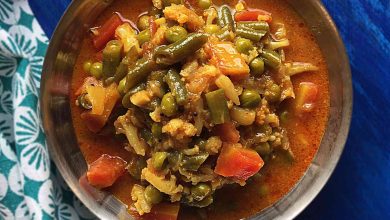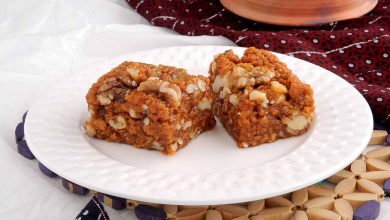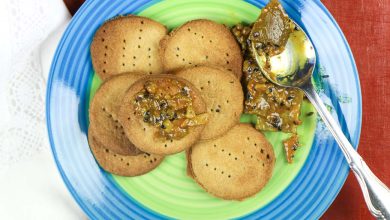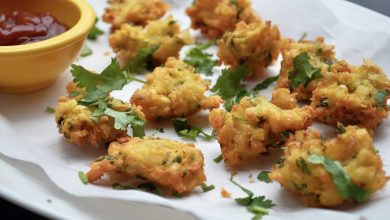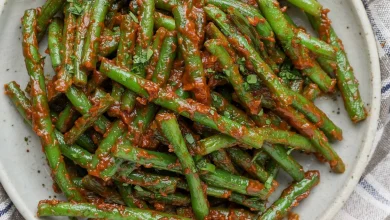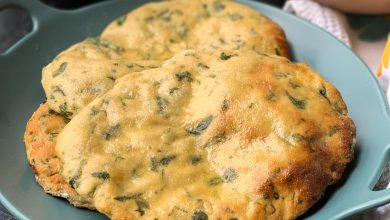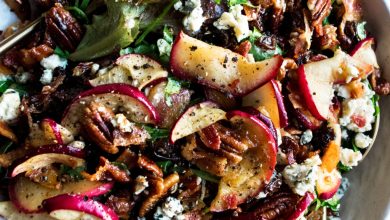Authentic Kashmiri Yakhni Chicken Pulao Recipe
Introduction
Embark on a culinary journey to the picturesque valleys of Kashmir with this authentic Kashmiri Style Chicken Pulao, also known as Kashmiri Yakhni Pulao. Revered for its rich aroma, vibrant spices, and tender chicken infused with the subtle sweetness of saffron and the warmth of traditional Kashmiri spices, this dish epitomizes the region’s gastronomic heritage. Lovingly crafted using a delicate balance of aromatic spices, quality basmati rice, and succulent chicken, this one-pot meal offers a harmonious blend of flavors that will delight your senses and transport you to the scenic landscapes of Kashmir. As featured on Love With Recipes, this recipe emphasizes authentic techniques, high-quality ingredients, and detailed steps to ensure a perfect outcome with every preparation.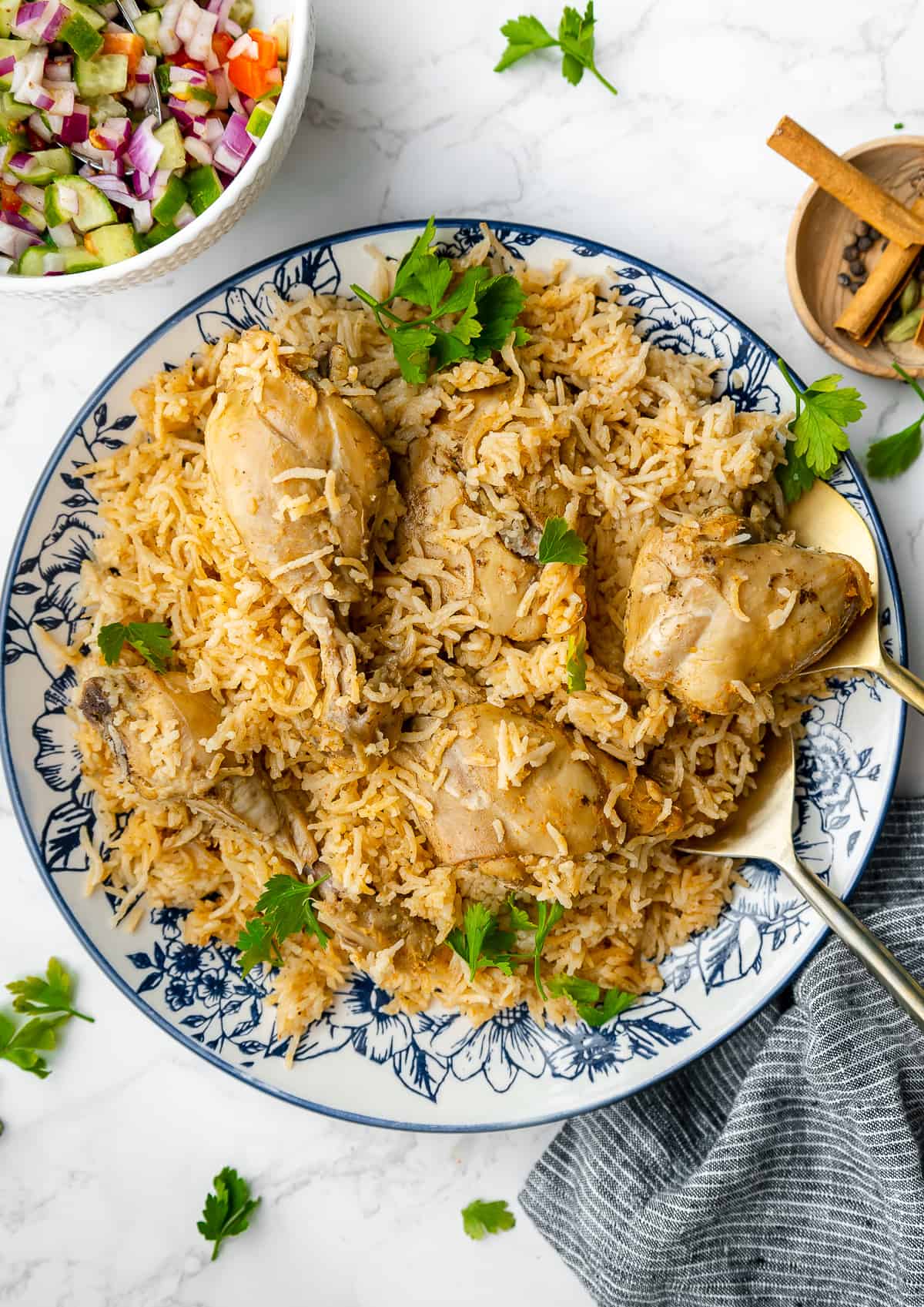
Time
Total Preparation and Cooking Time: Approximately 50 minutes
- Preparation Time: 10 minutes
- Cooking Time: 30 minutes
- Resting Time: 10 minutes
Needed Equipment
To achieve the best results for your Kashmiri Yakhni Pulao, ensure you have the following tools and utensils prepared:
- Large Heavy-Bottomed Pot: Essential for even heat distribution and preventing burning, especially during slow simmering.
- Wooden or Silicone Spoon: For stirring without damaging the pot’s surface.
- Measuring Cups and Spoons: To measure spices, rice, and liquids accurately.
- Fine-Mesh Strainer or Colander: For rinsing and soaking rice, ensuring excess starch is washed away for fluffy grains.
- Whisk: To thoroughly blend yogurt with spices, preventing curdling.
- Small Frying Pan or Tava: For roasting cashew nuts to perfection.
- Cutting Board and Sharp Knife: For chopping ginger, garlic, and chicken.
- Measuring Jug or Cup: For measuring water and liquids.
- Cloth or Kitchen Towel: For covering the pot during the resting phase.
Tags
Kashmiri Cuisine, Chicken Pulao, Authentic Recipe, Aromatic Rice Dish, Indian Spices, Festive Meal, One-Pot Meal, Traditional Kashmiri Food, Love With Recipes, Special Occasion
Serving Size
Serves approximately 4 generous portions, ideal for a family meal or small gathering. Each serving is rich in flavor, balanced with rice and chicken, and complemented by side accompaniments.
Difficulty Level
This recipe requires intermediate culinary skills, particularly in managing spice blends and rice cooking. It is suitable for home cooks familiar with basic Indian cooking techniques but can be simplified for beginners with careful attention to timing and spice blending.
Allergen Information
- Contains: Dairy (yogurt), nuts (cashew nuts), spices (mustard seeds, cumin, etc.).
- Note: Ensure to check for nut allergies or spice sensitivities before preparing or serving.
Dietary Preference
Non-Vegetarian. This dish is crafted with chicken and traditional spices, making it unsuitable for vegetarians or vegans without modifications.
Course
Main Course
Cuisine
Kashmiri / Indian
Ingredients
Ingredient Details and Quantities
Turmeric powder (Haldi)1/2 teaspoonFor color and subtle earthy flavor
| Ingredient | Quantity | Notes |
|---|---|---|
| Basmati rice | 2 cups | Soaked in water for 30 minutes before cooking |
| Chicken breasts | 500 grams | Cut into small, bite-sized pieces; can substitute with bone-in thighs for more flavor |
| Onions | 2 medium | Thinly sliced for sautéing |
| Ginger | 2-inch piece | Finely chopped or grated |
| Garlic | 8 cloves | Finely chopped or minced |
| Fennel seeds (Saunf) | 1 teaspoon | Provides subtle sweetness and aromatic flavor |
| Cumin seeds (Jeera) | 1 teaspoon | To add earthy aroma |
| Bay leaf (Tej Patta) | 1 | Aromatic base flavor |
| Mace (Javitri) | 1 small piece | Use sparingly; imparts a warm, spicy aroma |
| Cinnamon stick (Dalchini) | 1-inch stick | Whole for infusion |
| Cloves (Laung) | 3 | Whole, for aromatic flavor |
| Cardamom (Elaichi) | 4 pods | Lightly crushed for aroma |
| Ghee | 2 tablespoons | For sautéing and finishing |
| Oil | 2 tablespoons | Neutral oil such as vegetable or sunflower oil |
| Red chili powder | 1 tablespoon | Adjust to taste for heat |
| Curd (Yogurt) | 1 cup | Whisked thoroughly to prevent curdling |
| Black pepper powder | 1 teaspoon | For mild heat and flavor depth |
| Coriander powder (Dhania) | 2 teaspoons | Added for aromatic complexity |
| Cashew nuts | 1 tablespoon | Roasted for garnish |
| Salt | To taste | Adjust according to preference |
Instructions
Step 1: Prepare the Aromatic Base
Begin by heating a large, heavy-bottomed pot over medium heat. Use a thick-bottomed vessel to ensure even heat distribution, preventing the spices or rice from burning. Once the pot is hot, add the oil. Allow the oil to shimmer but not smoke—this indicates it’s ready for spices. Now, add the cumin seeds, fennel seeds, bay leaf, cinnamon stick, cloves, and crushed cardamom pods. These spices will immediately start to sizzle and release their essential oils, filling your kitchen with a warm, inviting aroma. This step is crucial for building the foundational flavor profile of your Kashmiri Pulao. Let the spices cook for about 30 seconds to 1 minute, stirring gently to prevent sticking and burning, until fragrant. The goal here is to activate the spices’ aromatic oils without overdoing it, which might turn bitter.
Step 2: Sauté the Base Ingredients
Next, add the finely sliced onions, ginger, and garlic to the pot. Stir well to coat the spices and onions with the oil. Sauté this mixture on medium heat, stirring occasionally, until the onions turn a light golden brown. Be patient; this process can take around 8-10 minutes. Proper caramelization of onions adds depth and sweetness to the dish, balancing the spices’ warmth. The ginger and garlic should become fragrant, infusing the oil with aromatic flavors that will permeate the entire dish. Use a wooden or silicone spoon to avoid scratching your pot, and scrape the bottom gently to prevent sticking, especially once the mixture thickens.
Step 3: Add the Yogurt Mixture
In a small bowl, whisk together the curd, red chili powder, turmeric powder, coriander powder, and black pepper powder. Whisk thoroughly until the mixture is smooth and uniform. Lower the heat to prevent the yogurt from curdling when added to the hot mixture. Slowly pour the yogurt mixture into the sautéed onions, stirring constantly. This process must be done gently and continuously to prevent the yogurt from splitting or curdling. The mixture will initially thicken and may produce steam; keep stirring to incorporate the spices evenly. This step forms the base of the pulao, imparting a tangy and spicy flavor that is characteristic of Kashmiri cuisine.
Step 4: Cook the Chicken
Add the chicken pieces to the pot, stirring to coat them with the spice-yogurt mixture. Cook over medium heat for about 6–8 minutes until the chicken turns opaque and starts to brown slightly. During this time, the chicken will absorb the flavors of the spices and yogurt. Do not rush this step; proper sautéing ensures tender chicken and a well-developed flavor profile. If the mixture becomes too thick or begins to stick, add a splash of water or stock to loosen it, but keep the heat moderate. The goal is to partially cook the chicken while infusing it with the aromatic spices.
Step 5: Incorporate the Rice and Water
Drain the soaked rice thoroughly to remove excess starch, which helps achieve fluffy grains. Add the rice directly into the pot with the chicken and spice mixture. Stir gently to distribute the rice evenly among the chicken and spices. Pour in 3 cups of water—adjust the quantity based on your rice’s absorption rate and brand, as some Basmati rice varieties might require slightly more or less water. Add salt to taste, ensuring the rice and chicken are seasoned adequately. Stir once more to combine all ingredients uniformly. This step marks the transition from sautéing to simmering, where the rice will absorb the flavors and become tender.
Step 6: Cook the Pulao
Bring the mixture to a rolling boil over high heat. Once boiling, reduce the heat to the lowest setting, and cover the pot with a tight-fitting lid to trap the steam. This is crucial for even cooking and fluffy rice. Allow the pulao to simmer gently for 15–20 minutes without lifting the lid, as lifting releases steam and can disrupt the cooking process. During this period, the rice will absorb all the flavors, and excess moisture will evaporate, resulting in perfectly cooked grains and tender chicken. Patience here ensures a cohesive, aromatic, and well-textured dish.
Step 7: Rest and Fluff the Rice
After the cooking time elapses, turn off the heat but do not remove the lid immediately. Let the pulao rest for 10 minutes; this resting period allows the residual steam to finish cooking the rice softly, and the flavors to meld beautifully. Once rested, gently lift the lid and use a fork to fluff the rice, separating the grains without breaking them. This step is vital for achieving the characteristic light and airy texture of Kashmiri Pulao. The fluffy grains will be infused with the fragrant spices and tender chicken, ready for garnishing and serving.
Step 8: Roast the Cashews
While the rice is resting, heat the ghee in a small frying pan over medium heat. Add the cashew nuts and roast until golden brown and crisp, about 2–3 minutes. Keep a close watch to prevent burning. Roasted cashews add a delightful crunch and a nutty aroma that complements the aromatic rice and spices. Once roasted, remove from heat and set aside.
Step 9: Garnish and Serve
Gently fold the roasted cashew nuts into the pulao, mixing lightly to distribute evenly. Transfer the aromatic Kashmiri Yakhni Pulao to a serving platter or individual bowls. Serve hot, accompanied by traditional side dishes such as Mooli Raita, fresh salad, or pickles. The dish pairs beautifully with a simple yogurt-based side, which balances the spices and adds a cooling effect. For an authentic experience, garnish with fresh coriander or a sprinkle of saffron strands soaked in warm milk for added color and fragrance.
Preparation Tips
- Rice Quality: Always use high-quality aged basmati rice for maximum fragrance and fluffiness. Rinse thoroughly to remove excess starch.
- Yogurt Handling: Whisk the yogurt vigorously before adding to prevent curdling. Use full-fat yogurt for richer flavor and better binding.
- Spice Freshness: Use whole spices when possible; freshly crushed spices release more aroma than pre-ground versions.
- Water Ratio: Adjust water quantity based on rice type and your desired rice texture. Less water yields fluffier grains, more water results in softer rice.
- Layering Flavors: For enhanced flavor, you can layer in a few saffron strands soaked in warm milk during the resting phase for a beautiful color and aroma.
Nutritional Information
| Nutrient | Per Serving (Approximate) |
|---|---|
| Calories | 430 kcal |
| Protein | 22 g |
| Carbohydrates | 48 g |
| Fat | 17 g |
| Saturated Fat | 7 g |
| Fiber | 3 g |
| Sodium | 420 mg |
Tips and Tricks
- Use Fresh Spices: Whenever possible, use freshly ground spices or whole spices for maximum aroma and flavor.
- Control the Heat: Maintain steady medium heat during sautéing to avoid burning spices or onions.
- Layer Flavors: Consider adding a few strands of saffron soaked in warm milk during the resting phase for a luxurious aroma and vibrant color.
- Vegetarian Version: Substitute chicken with vegetables like carrots, peas, or mushrooms for a vegetarian Kashmiri pilaf.
- Enhance the Aroma: Toast whole spices lightly before adding to unlock more flavors.
Add-ons
- Fresh coriander leaves or mint for garnishing
- A squeeze of lemon juice for added freshness
- Raisins or dried apricots for sweetness variation
- Finely chopped green chilies for extra heat
Side Dishes
- Mooli Raita (Radish Yogurt Dip)
- Indian Pickles
- Fresh Salad with onion, cucumber, and tomatoes
- Vegetable Sides like Kashmiri Chaman or Dum Aloo
Improvements
- Incorporate saffron soaked in warm milk during the resting phase for enhanced aroma and color.
- Add a splash of rose water or kewra essence for a floral note characteristic of Kashmiri cuisine.
- Use bone-in chicken or add a small piece of mutton for a richer, more traditional flavor.
- Cook the rice in a flavored broth instead of water for an intensified taste.
Save and Store
If you have leftovers, allow the pulao to cool to room temperature before storing in an airtight container. It can be refrigerated for up to 2 days. To reheat, sprinkle a few drops of water over the rice and gently microwave or reheat in a covered pan on low heat. For longer storage, freeze in portioned containers for up to 1 month. Reheat thoroughly before serving.
FAQ
Can I make this dish vegetarian?
Yes, simply substitute the chicken with vegetables like carrots, peas, potatoes, or mushrooms. Adjust cooking times accordingly to ensure vegetables are tender.
Can I use leftover cooked rice?
Using leftover rice is possible but may affect the texture. Preferably, use freshly cooked and fluffy rice to maintain the authentic Kashmiri pulao texture.
What is the best type of rice for this dish?
High-quality aged basmati rice yields the best aroma and fluffiness. Avoid short-grain rice, which tends to be stickier.
Can I add more spices for extra flavor?
Absolutely. Feel free to increase the amount of saffron, cardamom, or cloves to suit your taste preferences, but do so gradually to prevent overpowering the dish.
Is this dish spicy?
The level of spiciness depends on the amount of red chili powder used. Adjust according to your heat tolerance.
Conclusion
Authentic Kashmiri Yakhni Pulao is a celebration of aromatic spices, tender chicken, and fluffy basmati rice, encapsulating the rich culinary traditions of Kashmir. With patience and attention to detail, this dish transforms simple ingredients into a luxurious feast that will impress family and friends alike. Whether served during festivals, special family gatherings, or as a comforting weekend meal, this pulao exemplifies the timeless elegance of Kashmiri cuisine. Remember to use quality ingredients, handle spices with care, and give the dish adequate resting time for flavors to meld harmoniously. For more authentic recipes and culinary inspiration, Love With Recipes remains your trusted platform to explore the world of global cuisines.
